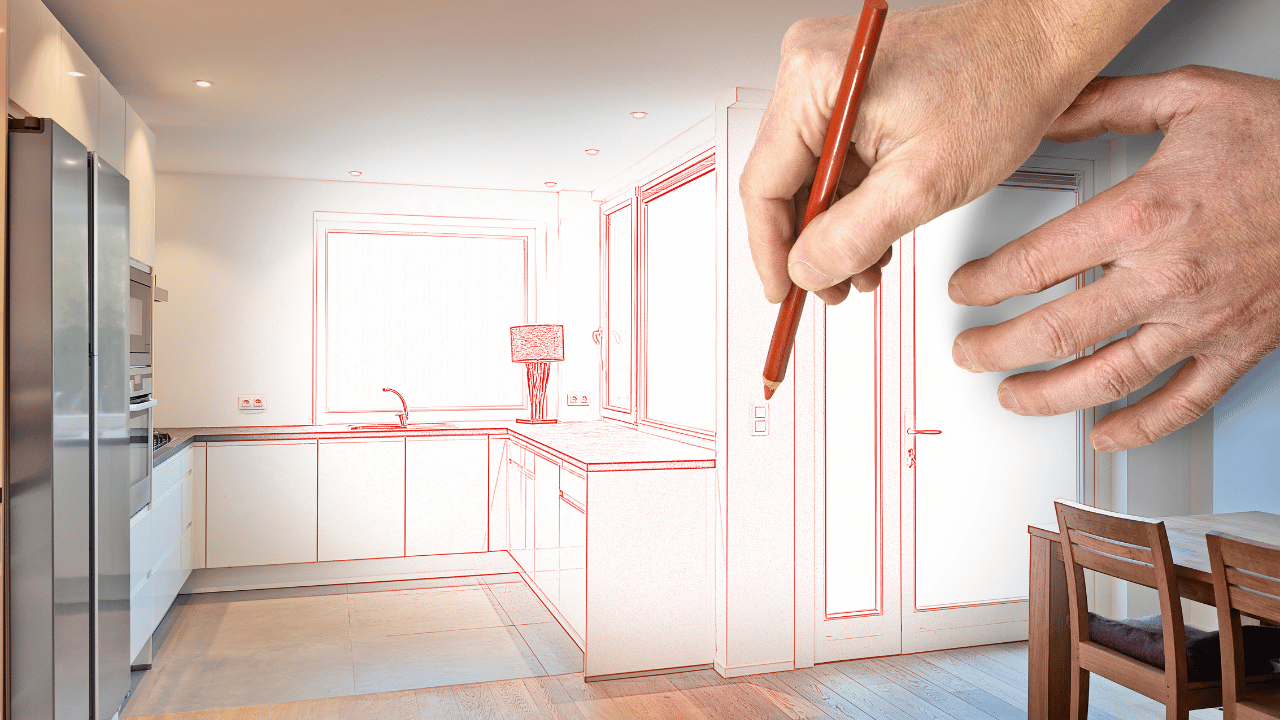Last Updated on October 16, 2023 by Pro Handyman Australia – Editorial Team
The heart of any home is undoubtedly its kitchen. It’s where meals are prepared, memories are made, and conversations flow. But as styles evolve and technologies advance, many homeowners in Australia find themselves contemplating a kitchen renovation. Whether you’re considering a minimalist modern design, a rustic farmhouse look, or a sophisticated gourmet setup, understanding the costs involved is crucial. In this comprehensive guide, we will delve deep into the world of kitchen renovation costs across Australia, offering insights into budgeting, regional price variations, and the elements that can impact your overall expenses. So, whether you’re in Sydney’s bustling suburbs or the serene landscapes of Perth, this article aims to equip you with the knowledge you need to embark on your kitchen transformation journey.
Understanding the Constraints of Kitchen Renovation
When contemplating a significant change in your kitchen layout, consider the complexities involved in relocating plumbing and electrical setups. These alterations contribute significantly to your overall expenses. The total cost escalation is contingent on various factors including the kitchen’s dimensions, position, and existing blueprint. To mitigate these expenses, maintaining the original architectural integrity and layout of your kitchen is advisable. This includes retaining the current placement of doors and windows. For a rudimentary revamp that preserves the existing structure, a budget of up to $20,000 is appropriate. However, if additional enhancements are desired, expenses could reach up to $30,000.
Maximizing Impact Through Aesthetic Choices
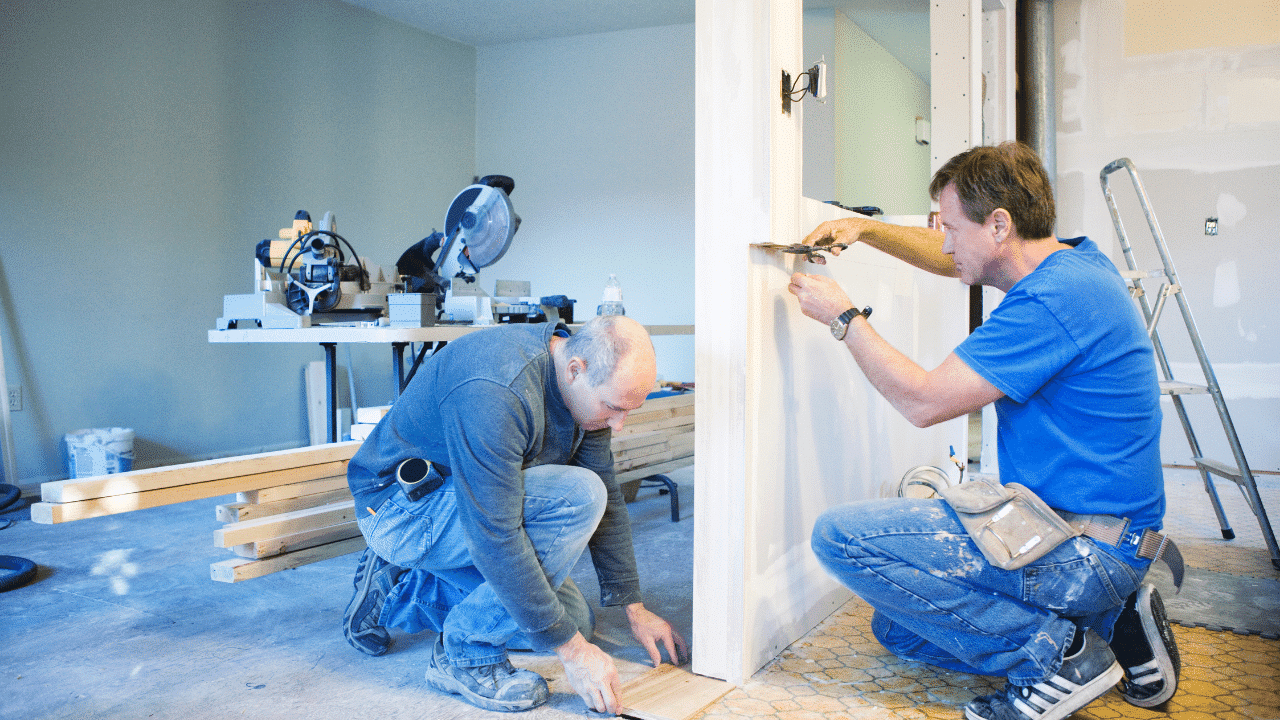
Even if the kitchen’s structural layout remains relatively unchanged, aesthetic modifications can dramatically transform its ambiance. Introducing new colors and accessories is an economical strategy for refreshing the space. Consider implementing splashbacks and wall paint in your preferred hues for a vibrant touch. Incorporating minor accessories, like bar stools, wall clocks, or fruit bowls, adds layers of color and personality.
For those inclined towards an eclectic kitchen, incorporating display spaces for vividly colored utensils or open shelving to showcase crockery can be visually striking. Alternatively, the modern-contemporary kitchen offers a minimalist approach, favoring a clutter-free environment, whereas a rustic style invites natural wood textures and vintage or ‘distressed’ cabinetry for a homely feel.
Additionally, the character of your current kitchen can serve as an inspiration for its transformation. A nostalgic nod to past decades, such as adopting a 1950s or 1960s retro motif, can infuse your kitchen with the charming characteristics of those eras. This approach allows for the seamless integration of period-specific features, marrying nostalgia with modern functionality.
Understanding Kitchen Renovation Expenses
Embarking on a kitchen renovation requires an understanding of the potential costs involved, with project budgets varying significantly from $10,000 to an excess of $45,000. These costs fluctuate based on several contributing factors, including your kitchen’s dimensions, the quality of materials chosen, the appliances you opt for, and prevailing labour charges. It’s crucial to recognize that labour expenses can differ substantially, contingent on your geographical location.
Anticipating Your Kitchen Renovation Cost
A kitchen is not only a significant household expense due to its extensive use, but it’s also a long-term investment expected to serve you for 15 to 20 years. This longevity necessitates thorough planning and budgeting to ensure that your kitchen remains functional and aesthetically pleasing throughout its lifespan.
Cost of Kitchen Renovations in Australia

To gauge the financial scope of a kitchen makeover in Australia, anticipate an expenditure ranging from $10,000 to more than $45,000. This broad range accounts for various elements contributing to your project’s overall cost. Recent economic shifts, such as inflationary trends, have imposed additional financial strains by escalating the prices of labour, materials, and goods, sometimes impacting their availability.
Considering a comprehensive renovation that encompasses new appliances, cabinetry, an overhaul of plumbing and electrical systems, and flooring, here’s what you might expect:
- Budget renovations for smaller kitchens might range from $10,000 to $22,000.
- Mid-range kitchens usually demand a budget between $22,000 and $45,000.
- Upscale, luxury kitchens will likely require an investment exceeding $45,000.
These estimates serve as a framework for what you might expend on your kitchen transformation, delving into specific cost categories later. First, let’s examine the factors influencing the financial aspects of your kitchen refurbishment.
Achieving a Designer Kitchen Aesthetic for Less
Despite these figures, creating a sophisticated kitchen ambiance doesn’t always necessitate a hefty budget. Strategic choices in design, materials, and labor can significantly reduce costs while still achieving a high-end look. This approach involves careful planning, budgeting, and a willingness to compromise on certain elements to keep expenses within a manageable range.
Project Duration for Kitchen Renovations
The timeframe for a kitchen renovation can vary based on the project’s complexity, the professionals involved, and unforeseen challenges that arise during construction. Understanding this aspect is crucial for planning and setting realistic expectations.
Engaging Professionals for Your Kitchen Overhaul

Kitchen renovations are intricate projects that often require the expertise of skilled tradespeople. Determining who to hire involves considering the various stages of your renovation and the corresponding professionals, ranging from plumbers and electricians to carpenters and countertop specialists.
Navigating Regulatory Requirements: Kitchen Builder Licensing
Ensuring that your kitchen builder is properly licensed is non-negotiable. Licensing is a regulatory requirement that guarantees the individual or company meets the industry standards necessary for your project’s safety and quality.
Identifying Quality Kitchen Cabinetry
Cabinetry is a central feature of your kitchen, both functionally and visually. Discerning the quality indicators in materials, construction, and finish is key to selecting cabinets that will endure the rigours of daily use.
Deciphering Average Kitchen Renovation Costs
While providing specific figures is challenging due to the unique aspects of each project, understanding average costs can guide your budgeting process. Recognizing what influences these averages helps you make informed decisions tailored to your financial constraints.
Evaluating Comprehensive Kitchen Renovation Expenditures
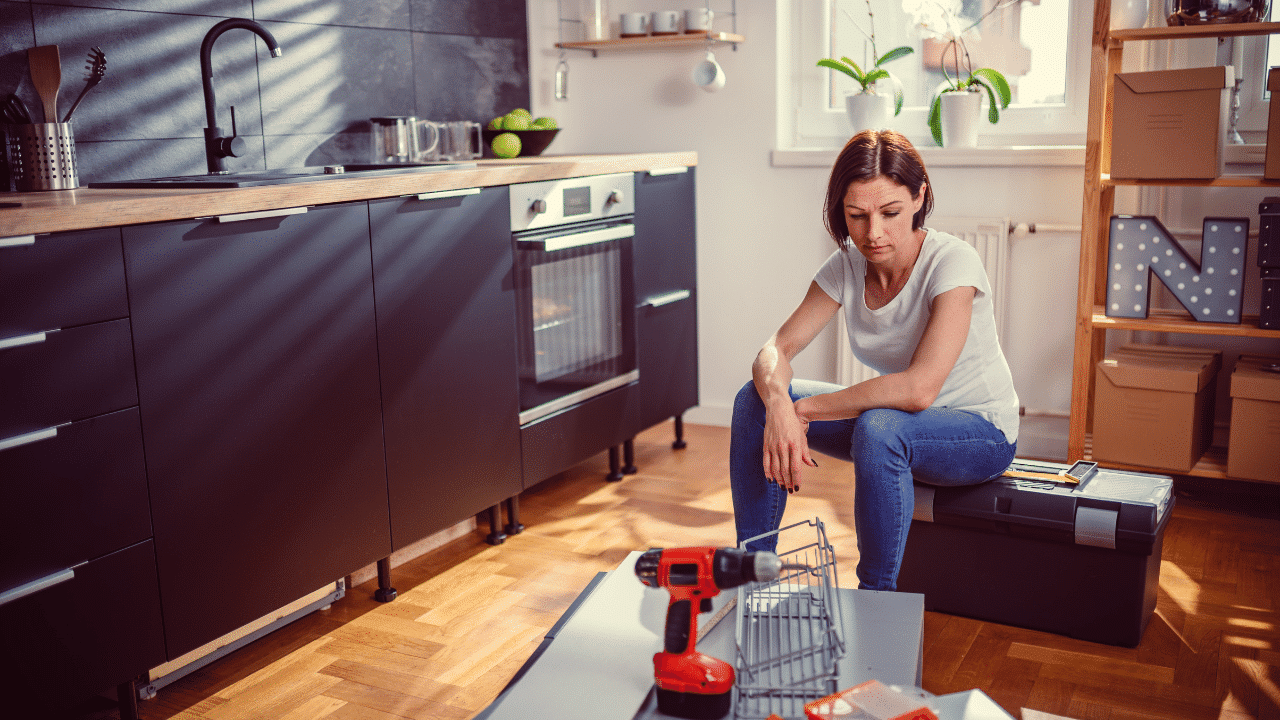
When you account for all components of a full-scale kitchen renovation, costs can accumulate quickly. From foundational work involving plumbing and electricity to aesthetic finishes like paint and hardware, each layer of the project contributes to the total expense.
Considering Flat Pack Kitchens
Flat pack kitchens have emerged as a popular alternative, offering a balance between cost, quality, and design flexibility. They require an evaluation of your DIY skills and understanding whether this option aligns with your budget and desired outcome.
Selecting Competent Tradespeople for Your Renovation
The success of your kitchen renovation hinges significantly on the professionals you enlist. From the quality of workmanship to adherence to timelines and budgets, the right tradespeople can make the difference between a smooth project and a fraught one. Thus, a careful vetting process is essential.
Optimizing Budget with Existing Kitchen Appliances

When it comes to kitchen renovations, significant savings are possible by retaining current appliances. Evaluate the functionality of your existing appliances and assess their likelihood of operating efficiently in the years ahead. This assessment allows you to narrow down specific appliances that require replacement. In circumstances necessitating the purchase of new appliances, practical, standard models that align with your kitchen’s aesthetic are ideal. Prioritize appliances with energy star ratings to ensure cost savings over time. It’s worth noting that integrating appliances into your kitchen layout and hiding them behind custom cabinetry often necessitates a higher investment.
Selecting Countertops and Splashbacks Within Your Financial Plan
Laminate countertops are a prevalent and budget-conscious choice in many Australian kitchens, thanks to their practicality and durability. The modern laminate market offers an array of colors and designs, with costs beginning at approximately $170 per square meter, presenting an affordable option. If you seek alternative materials, both bamboo and stainless steel are compelling choices, with their unique aesthetic contributions and a slightly higher cost starting around $300 per square meter. Bamboo imparts a warm, wooden ambiance, while stainless steel offers a contemporary, hygienic appeal commonly favored in commercial kitchens.
Regarding splashbacks, ceramic tiles are a cost-effective and versatile option. They allow for creativity, whether you prefer a uniform style or assorted colors and patterns. If your budget is limited or you prefer more luxurious materials like mosaics or glass, consider focusing on the area directly above your cooking space. This strategy allows for the inclusion of premium materials without overspending. Additionally, utilizing high-quality, kitchen-specific antibacterial paint can complement the splashback material economically.
Exploring Economical Cabinetry Solutions
Standard cabinets are a prudent choice when working with a limited budget, given the wide variety of styles available today. An even more cost-effective approach could involve only replacing the doors of sturdy existing cabinets. Enhancing your current cabinets with new knobs or handles, or even repainting or refinishing them, can refresh their appearance substantially. Depending on your kitchen’s condition and the extent of the planned changes, it might be more practical and budget-friendly to replace the entire cabinetry with standard options. Numerous suppliers offer competitively priced, easy-to-install flat pack kitchens, which could be an economical and stylish solution.
Effective Lighting on a Budget
Proper lighting, encompassing both natural and artificial sources, is crucial in a kitchen. While altering the quantity of natural light might not be feasible due to existing structural constraints, you can certainly improve the quality of artificial lighting. Opt for straightforward, efficient lighting solutions. Recessed lights, for instance, are a hassle-free option for brightening the entire kitchen area. Dimmable lights are worth considering for their versatility during social events. While halogen lights are effective, LEDs are gaining traction for their efficiency and decreasing cost. If a pendant light is on your wish list, either now or in the future, ensure you coordinate with your builder to arrange the necessary electrical setup.
Affordable Flooring Alternatives
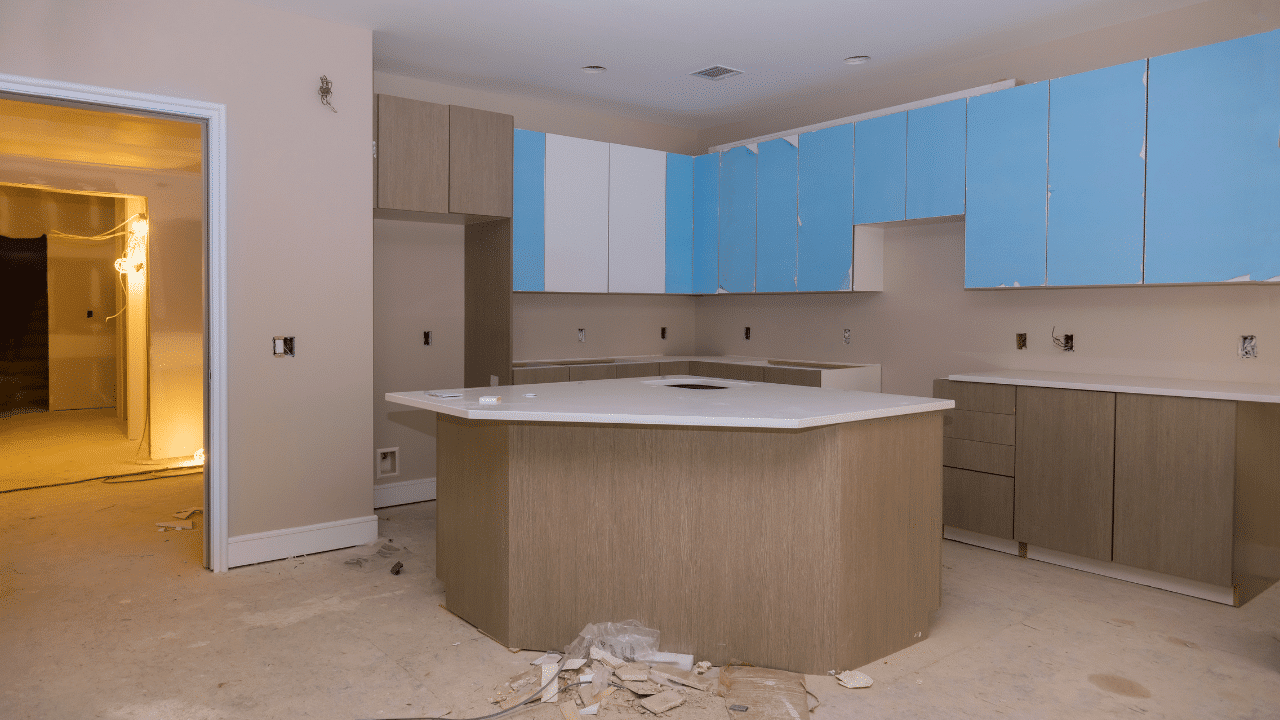
For cost-effective flooring, linoleum and luxury vinyl stand out as practical choices. These materials are durable, low-maintenance, and resistant to water, with linoleum offering added benefits of being antibacterial and hypoallergenic. Luxury vinyl, available in various sophisticated designs, enhances acoustic comfort and warmth underfoot compared to traditional tile. If your budget allows for a modest increase in flooring expenses, ceramic tiles or bamboo flooring are worthwhile investments. Particularly, bamboo serves as an eco-friendly and less expensive substitute for conventional hardwood, appealing to both your budget and environmental consciousness.
Cost Factors in a Kitchen Renovation
Navigating the complex world of kitchen renovation costs can seem daunting. The price tag of a kitchen revamp in Australia can swing widely based on location, preferences, and scope. While an average kitchen facelift in Australia stands at around $17,000, metropolitan areas like Sydney can see this average climb to a whopping $23,000. Yet, understanding the breakdown of expenses can aid in making informed decisions.
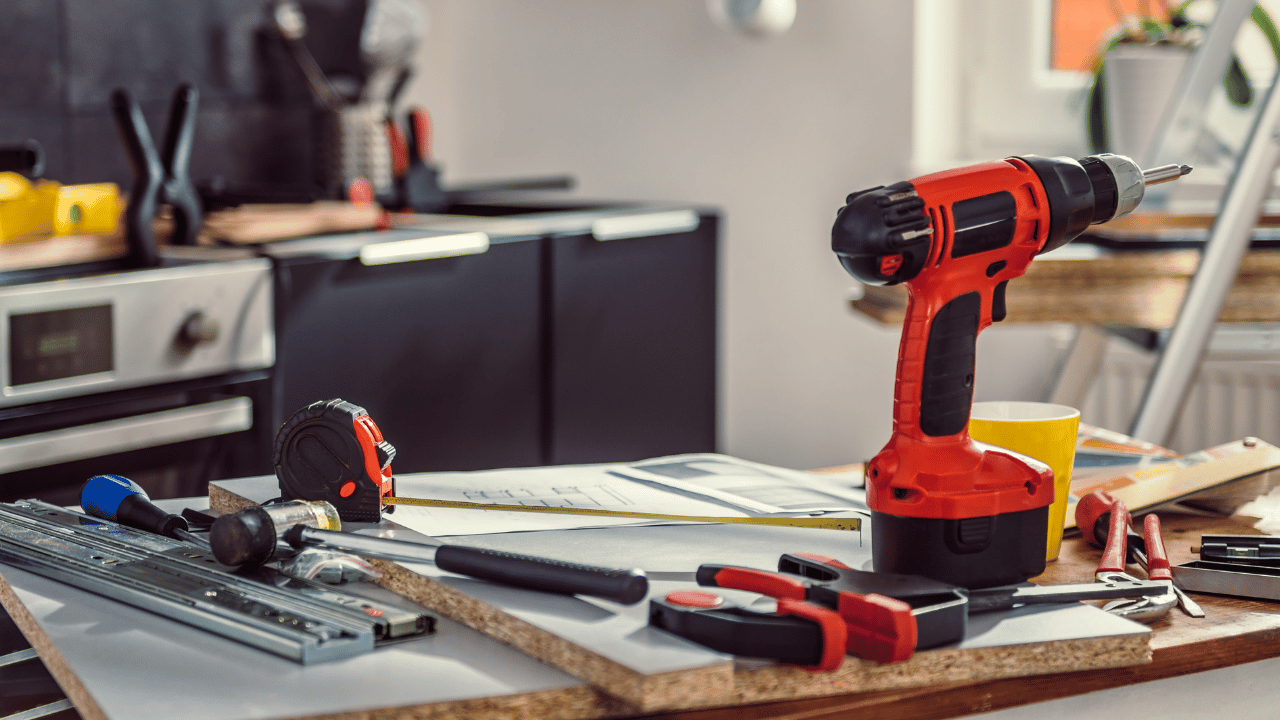
1. Renovation Tiers:
Light Renovations:
Budget-conscious individuals often lean towards light renovations. These changes are primarily cosmetic in nature and don’t involve significant structural alterations. Upgrades might include painting, changing out furniture, updating appliances, or replacing benchtops without undertaking major construction. By avoiding intensive labour, costs for such revamps hover between $10,000 and $20,000. If you’re handy, tackling some tasks as DIY projects can further drive down these costs.
Moderate Renovations:
Mid-range renovations strike a balance between aesthetics and structure. Typically priced between $20,000 to $45,000, these renovations often involve working with contractors. Such projects might encompass the installation of feature walls, repositioning fixtures, introducing floating cabinetry, or even knocking down walls for an open-plan concept. This category builds upon the foundational changes from a light renovation, adding layers of complexity.
Extensive Renovations:
For those seeking opulence, extensive renovations are the pinnacle of luxury. Such ventures demand the finest materials and could involve a complete kitchen overhaul or relocation. The emphasis here is on top-tier materials and significant structural changes. While the costs for such renovations start at $45,000, the sky’s the limit, with some projects touching or even surpassing the $100,000 mark.
2. Delving into Key Renovation Components:
Benchtops:
A pivotal element, benchtops often shape the kitchen’s ambiance. Choices abound, from engineered stone to modern contenders like Kompacplus. Cost variations are significant; for instance, while laminate remains an economical option ranging from $100-$400 per square meter, luxurious marble can command prices between $800 and $2,200 per square meter. Opting for stainless steel? Expect to set aside about $900 per square meter. And remember, installation costs vary based on the complexity of the chosen material.
Appliances:
No kitchen revamp is complete without appliances. Essential items like fridges, ovens, and dishwashers can set you back by a few thousand dollars. Yet, small appliances can be more budget-friendly, with combined costs of a few hundred dollars. While the average range for a complete appliance overhaul stands between $3,000 to $6,000, savvy shoppers might consider exploring second-hand markets for quality finds at reduced prices.
Cabinetry:
Cabinetry offers a dual function – utility and aesthetics. If your cabinets remain sturdy, consider merely replacing the doors for a fresh look. Costs for such replacements typically range from $60-$500, making it an economical choice for style upgrades.
Flooring:
Kitchens demand durable, water-resistant flooring options. Vinyl, tile, and hybrid flooring remain popular, ensuring longevity against spills and wear. Those seeking a harmonious design might pair tile floors with complementary tile splashbacks. However, personal preferences could steer some towards timber or laminate, keeping in mind the maintenance needs for such materials.
In conclusion, while the cost spectrum for kitchen renovations is broad, a thorough understanding of individual components, paired with strategic planning, can yield a transformed space aligning with both vision and budget.
Why You Should Renovate Your Kitchen: More Than Just a Cooking Space
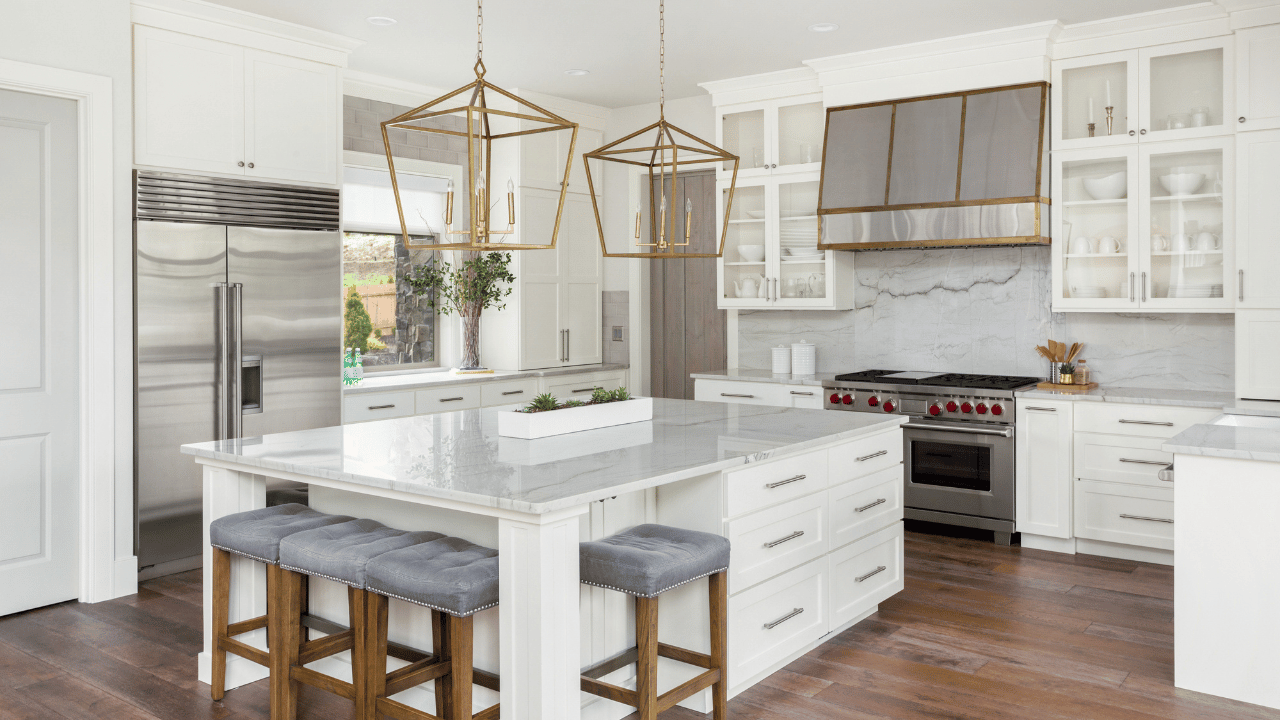
Kitchens have evolved tremendously over the years. Once merely a tucked-away space for cooking, it’s now the heart of many homes—a place of gathering, bonding, and, yes, culinary adventure. So, when considering a home makeover, the kitchen often tops the list. But why should you really invest in renovating this particular space? Let’s delve deeper.
1. Increase Your Home’s Value
Arguably the most tangible benefit, a modern, functional kitchen can significantly boost the value of your home. According to several real estate studies, kitchen renovations offer one of the highest return on investments when it comes to home improvements. Potential buyers often prioritize modern kitchen amenities and aesthetics, meaning a renovated kitchen can be a prime selling point.
2. Improve Functionality
Over time, our needs and lifestyles change. The kitchen layout that worked a decade ago might now hinder your cooking flow. Renovating allows you to redesign the space to your current needs, whether it’s adding an island for additional prep space, extending counter space, or adding more storage solutions.
3. Energy Efficiency and Sustainability
Outdated appliances not only strain your utility bills but also have a larger carbon footprint. Modern kitchen appliances are designed with energy efficiency in mind. By upgrading, you’re not just saving money, you’re also making a green choice. Pair that with sustainable materials for cabinets and counters, and you’ve got yourself an eco-friendly kitchen.
4. Safety Enhancements
A kitchen renovation can also mean a safer space. This could involve better ventilation to reduce the risks of harmful pollutants from the stove or replacing old, potentially hazardous appliances. An organized, clutter-free kitchen is also less prone to accidents.
5. Modern Aesthetics
Design trends change, and what was in vogue a decade ago might now seem dated. A kitchen renovation is your canvas to paint a space that reflects current trends and your personal style. It can be a total transformation or just swapping out countertops and fixtures.
6. Enhanced Comfort
A kitchen shouldn’t just be functional; it should be comfortable. Think about better ventilation to remove heat and odour, an island where kids can do homework, or a small breakfast nook. These little additions can make your kitchen more than just a cooking space—it becomes a living space.
7. Addressing Wear and Tear
Over the years, kitchens experience a lot of wear and tear. Those chipped countertops, peeling paint, or broken cabinet doors can be unsightly. Before minor issues become major repairs, it might be time to consider a renovation.
8. Personal Joy and Satisfaction
Lastly, think about the joy and satisfaction you derive from a beautiful space. Cooking in a newly renovated kitchen, where every gadget is in its place and all is shiny and new, can reignite a passion for culinary exploration. Plus, it’s a space where memories are made—from daily breakfast routines to festive holiday cooking.
Executing a $10,000 Kitchen Makeover
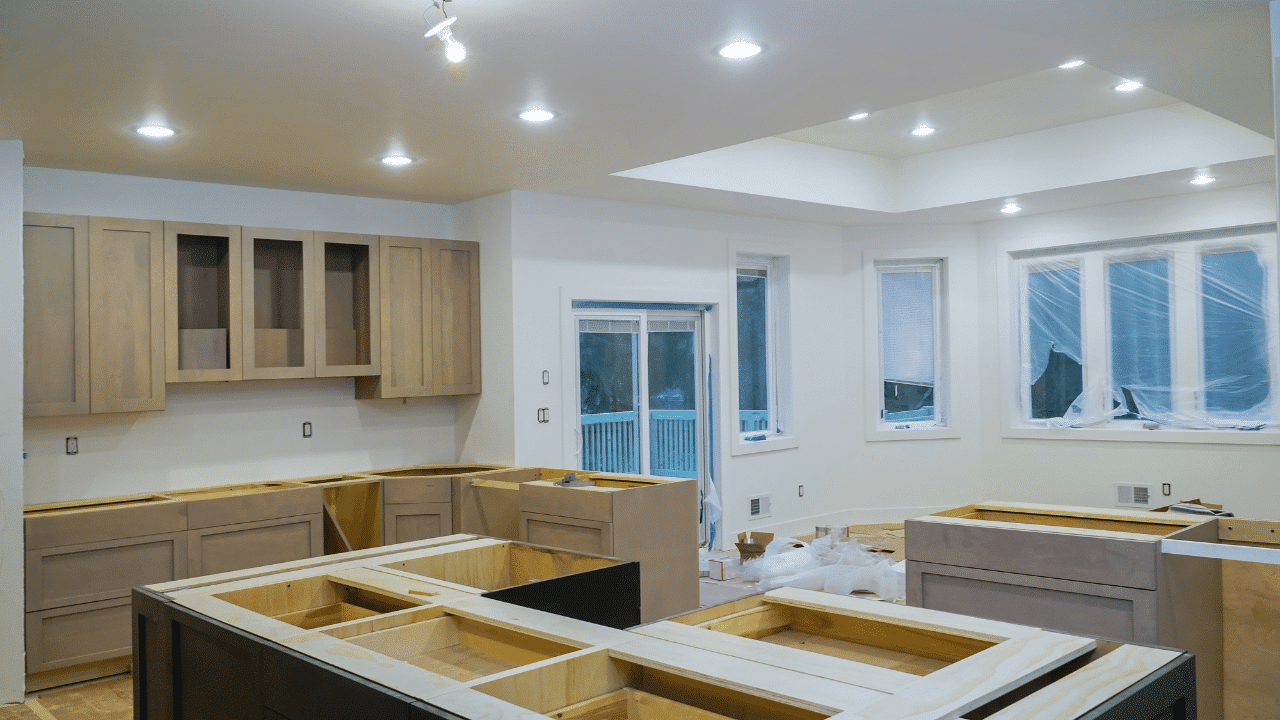
Embarking on a kitchen renovation with a $10,000 budget requires both creativity and a practical mindset. Achieving significant change within this budget is feasible, yet it’s essential to set realistic expectations from the outset.
Optimizing Your Existing Layout
A crucial consideration is that your budget constraints will generally not cover extensive plumbing or electrical reconfigurations. Such work is typically costly due to the labor-intensive nature of relocating these systems. For smaller or galley-style kitchens, this limitation often poses no problem, as the existing layout can be utilized effectively without the need for major structural changes.
Smart Choices on Key Components
Within a $10,000 budget, several elements can be refreshed or replaced to give your kitchen a new look:
- Cabinetry: Opting for flat-pack models or revitalizing your current cabinets with resurfacing or repainting can dramatically alter your kitchen’s appearance without a hefty price tag.
- Flooring: Laminate flooring, starting at $20 per square metre with installation, or vinyl tiles, priced around $30 per square metre installed, are cost-effective yet stylish options.
- Paint: A fresh coat of paint can significantly brighten your kitchen space. Choose satin or semi-gloss finishes with anti-mould properties for durability and easy cleaning.
- Benchtops: Laminate surfaces, instead of pricier engineered stone, can offer the luxurious appearance of natural stone or Caesarstone at a fraction of the cost.
Balancing Aesthetics and Functionality
While it’s tempting to allocate more of your budget to visually striking elements, it’s prudent not to overlook the practical components that contribute to your kitchen’s functionality. For instance, investing in a higher-quality rangehood with sufficient ventilation capacity is crucial. Opting for a more efficient model, even at an additional $400-$500, proves more beneficial in the long run compared to spending on trendy elements like a fancy splashback that might go out of style.
An expert in the field highlights a common mistake: homeowners may prioritize aesthetic enhancements while neglecting essential functional aspects. They might splurge on a visually appealing splashback or benchtop but skimp on a critical element like the rangehood. This oversight can lead to subpar ventilation, detracting from the kitchen’s overall functionality.
The professional’s insight emphasizes the importance of considering everyday utility in your renovation decisions. Investing in elements that you will use regularly, like a robust rangehood, ensures your kitchen remains practical and enjoyable to use for years, transcending transient design trends.
Conclusion

As we’ve traversed the myriad aspects of kitchen renovations in Australia, it’s evident that costs can vary immensely based on individual choices, scope, and location. Whether one is gravitating towards a modest cosmetic refresh or aspiring for a lavish transformation, the investment can range from a few thousand dollars to the upper echelons of six-figure sums. What remains constant is the importance of meticulous planning, research, and seeking expert advice. While metropolitan areas like Sydney might command a higher renovation ticket, savvy choices in materials, appliances, and DIY elements can significantly influence final costs. In essence, a kitchen renovation isn’t just about monetary investment; it’s a blend of vision, functionality, and value enhancement for one of the most integral spaces in our homes. As you embark on this transformative journey, remember that each choice should align with your lifestyle needs, aesthetic preferences, and long-term home goals.
